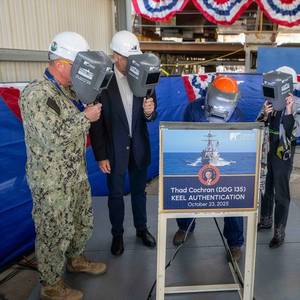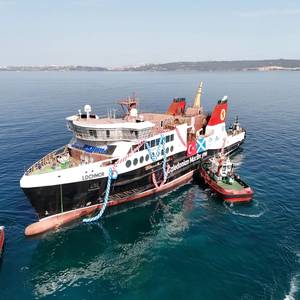
HII’s Ingalls Shipbuilding authenticated the keel today of Arleigh Burke-class guided missile destroyer Thad Cochran (DDG 135). The ship honors Thad Cochran, a Navy veteran and former U.S. senator who represented Mississippi from 1978 to 2018. Ceremony attendees included Cochran’s wife and ship sponsor Kay Webber Bowen Cochran and Ingalls shipbuilders.

MV Lochmor, the first of two new vessels for the Little Minch routes, was launched August 23, 2025 at Cemre Marin Endustri shipyard in Yalova, Turkey.MV Hebrides, the new ferry along with sister vessel, MV Claymore, will provide a two-vessel service to the routes between Uig on Skye, Tarbert (Harris) and Lochmaddy (North Uist).

Fairfield-Maxwell Ltd. (FML) is returning to the shipping industry in Japan and opening a new office in Tokyo aimed at participating in ship construction, ownership, investment and leasing.The new company will focus on being the tonnage provider of choice and offering a diverse range of vessel types, including chemical tankers, medium range (MR) tankers, gas carriers and newbuilds.

Four students from the U.S. Merchant Marine Academy (USMMA) – Draygan Colonese, Elizabeth Kay, Charles Lausten and Gianna Russo – have been awarded Thomas B. Crowley Sr. Memorial Scholarships in recognition of their success and commitment to careers in the maritime industry.They were selected based on their academic achievements and performance during the cadet training periods aboard